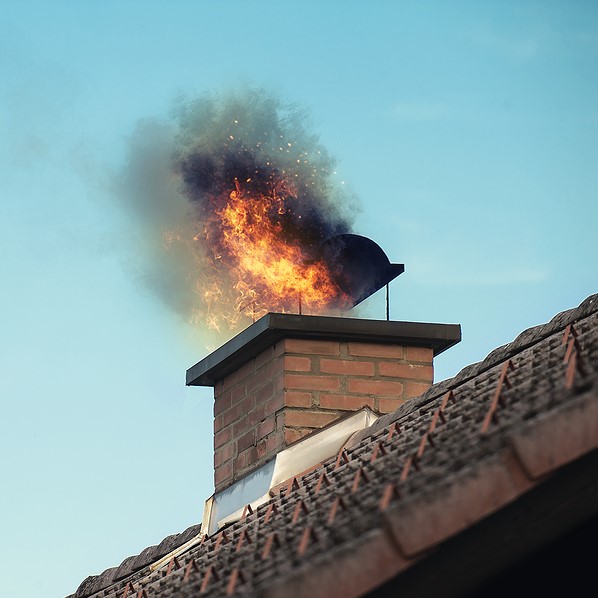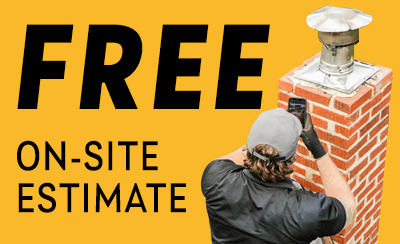Fire Safety Starts In the Chimney
Winter in Western New York is a festive time of year. Shopping malls and streets are crowded with shoppers. Families go ice skating at Canalside under the stars, and the subtle aroma of Hickory burning in the fireplace fills the air. Unfortunately, the sounds of fire engines racing across Buffalo and Rochester on an otherwise quiet night are all too familiar. There are hundreds of chimney fires across the region every year, usually in the evening after folks have ignited their fireplace to warm their residence after a day of work.
A chimney fire can cause a lot of damage to your home, not just from the fire itself, but from the water that fire crews must use to put it out. However, it is vital to note that chimney fires are entirely preventable. That’s why we always tell our customers that fire safety starts in the chimney.
 Understanding the Cause of Chimney Fires
Understanding the Cause of Chimney Fires
The primary reason behind most chimney fires is creosote buildup. Creosote is a highly flammable, tar-like byproduct of burning wood. When smoke and gases exit the fireplace and enter the cooler chimney, condensation occurs, causing this residue to stick to the inner walls of the flue. As these layers of creosote accumulate and linger in the flue, they harden into a significant fire hazard.
Other common causes of chimney fires include:
- Animal Nests: Birds and other animals often build nests inside the chimney, creating a blockage of highly combustible debris.
Combustible debris (leaves, twigs): Leaves, twigs, and other debris can fall in and block the flue of an uncapped chimney. This debris can act like kindling, combusting into a fire that can quickly spread to the attic, roof deck, and wood framing. - Missing or Damaged Chimney Cap: A chimney cap helps shed rain, snow, and debris from the exposed flue vent. A missing or damaged cap can lead to both water damage and the accumulation of combustible materials.
- Cracked Chimney Liner: The chimney liner insulates the interior masonry walls from the heat and flames in the fireplace. Cracks in the liner allow the extremely high heat to ignite the ceiling and walls, quickly engulfing the entire house in flames with thick, choking smoke.
- Lightning Strike: Lightning that strikes the chimney can ignite creosote within the flue and cause a fire.
Most Homeowners Unaware Their Chimney Is On Fire
Many chimney fires go unnoticed by homeowners until it’s too late. While some fires are noisy and dramatic, others can be slow-burning and silent. A homeowner might only become aware of the fire when a passerby or neighbor sees flames shooting from the chimney top and calls the fire department. In other cases, a low rumbling sound, similar to a freight train, or a loud cracking and popping noise can be an indication of an active chimney fire.
Signs Your Chimney Had A Fire
A chimney fire can occur and extinguish itself unbeknownst to the homeowner. Since it can still cause significant damage, it is critical to have your chimney professionally inspected if you notice any of these signs at any time:
- “Puffy” or “honeycombed” creosote
- Warped metal components
- Cracked or blistered flue tiles
- Discolored rain cap
- Pieces of clay or mortar in your firebox
- Smoke enters your living space
How to Prevent Chimney Fires
The most effective way to prevent a chimney fire is through proper maintenance and safe burning practices.
- Schedule a Professional Inspection and Sweeping: The Chimney Safety Institute of America (CSIA) recommends an annual inspection by a certified chimney sweep. They can identify any flammable creosote buildup, structural damage, or blockages that create a fire hazard.
- Burn Seasoned Wood: Only burn wood that has been properly dried for at least six months. Seasoned wood burns hotter and more completely, producing less creosote, smoke, and emissions.
- Avoid Burning Trash: Never burn wrapping paper, cardboard, Christmas trees, or other combustible materials in your fireplace, as these can create a significant fire hazard.
- Install a Chimney Cap: A properly installed cap with a spark arrestor prevents debris and animals from littering the chimney with combustible organic matter. It also prevents sparks from landing on the roof.
- Install smoke and carbon monoxide (CO) detectors on every level of your home. These detectors are essential for safety and can provide an early warning of a fire or unsafe levels of CO gas in your home.
 Professional Chimney Inspection & Sweeping in Western New York
Professional Chimney Inspection & Sweeping in Western New York
Fire prevention starts in the chimney! Contact Felgemacher to schedule your annual chimney inspection. Our professional chimney technicians serve areas from Woodlawn in Erie County to Greece in Monroe County, NY, and everywhere between Greater Buffalo and Rochester. As an owner-certified CSIA chimney sweep, we are committed to educating our customers about fire safety, so your family can continue to enjoy the hearth-warming experience of a cozy fireplace. To schedule service, visit Felgemacher online.



